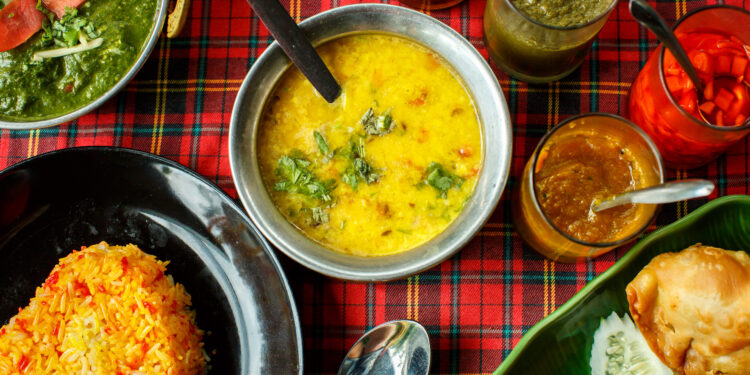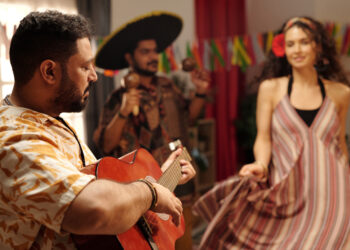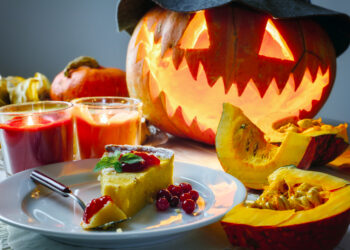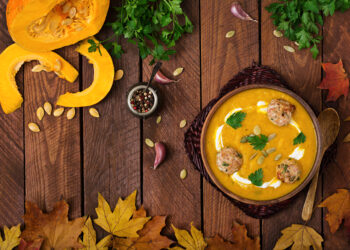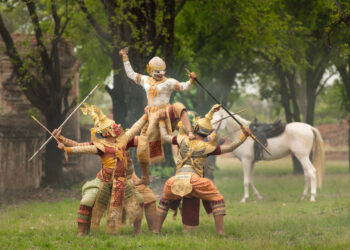Caribbean Pelau vs Indian Khichdi might sound like a culinary clash, but in truth, these two hearty one-pot dishes are more like distant cousins who’ve grown up on opposite sides of the world. Both are humble, comforting, endlessly adaptable, and beloved across generations. If you’ve ever thought of rice as “just a side dish”, pelau and khichdi are here to remind you that rice can easily take centre stage, bringing flavour, culture, and family stories into one steamy pot.
One-pot meals have always carried a sense of comfort and practicality. With just a single pot, you create depth of flavour, balance of nutrition, and a meal that feels both homely and complete. The idea of “one-pot magic” lies in its simplicity: one cooking process, one clean-up, yet a dish that delivers nourishment and satisfaction in full.
Pelau: A Caribbean Classic
Pelau is the sort of dish that gets mentioned in the same breath as “Sunday lunch”, “lime with friends”, or “picnic cooler by the beach”. It’s not just food, it’s a lifestyle. At its heart, pelau is rice cooked with pigeon peas, meat (often chicken), and vegetables, all brought together with the deep, slightly smoky flavour of caramelised sugar. Yes, sugar. Browned sugar is melted down to coat the meat before everything else joins the pot, and it’s this step that gives pelau its signature colour and depth.
The anatomy of pelau:
- Rice: Traditionally long-grain. In the Caribbean, parboiled rice is common, giving a firm, non-sticky texture.
- Protein: Chicken is the go-to, though beef or salted pigtail can make appearances.
- Pigeon peas: The earthy backbone of the dish. Tinned or fresh, they balance the richness of the meat.
- Veg: Carrots, peppers, sometimes pumpkin — flexible depending on what’s in season.
- Flavour base: Garlic, onion, thyme, scotch bonnet pepper if you like heat.
- Coconut milk: Adds creaminess and a subtle sweetness.
If khichdi is a warm hug, pelau is a carnival in a pot. Smoky, savoury, and just spicy enough, it’s a dish made for sharing.
Khichdi: India’s Comfort Bowl
Now we turn to the Indian subcontinent, where khichdi has long held its place as a symbol of comfort and nourishment. At its core, it is a straightforward preparation of rice and lentils, simmered with mild spices until tender. Yet beyond its simplicity, khichdi carries cultural weight — a dish that has sustained families for centuries, offering warmth during everyday meals and reassurance during life’s more challenging moments.
The anatomy of khichdi:
- Rice: Usually short- or medium-grain, often broken rice for quick cooking.
- Lentils (dal): Moong dal (yellow split lentils) is common, though regional variations might use masoor (red) or toor (pigeon pea lentils).
- Spices: Cumin, turmeric, ginger — mild and warming rather than fiery.
- Veg: Optional, but carrots, peas, and spinach are frequent guests.
- Texture: Can be soupy or drier depending on preference.
In many Indian homes, khichdi is a dish of recovery. Easy to digest, nourishing, and light, it’s often the first solid food given to children and the gentle meal served when someone’s under the weather. But don’t mistake gentle for bland — with a dollop of ghee, a sprinkle of pickle, or some crispy papad, khichdi sings.
Why Pelau and Khichdi Belong in the Same Conversation?
At first, Caribbean pelau and Indian khichdi might seem like cultural opposites: one is smoky, celebratory, often laced with scotch bonnet peppers; the other is soothing, medicinal, turmeric-stained comfort. But the deeper you look, the more their family resemblance shines through.
- Rice as the canvas: Both dishes treat rice not as a side, but as the foundation.
- Protein partners: Where pelau uses peas and meat, khichdi turns to lentils for its protein boost.
- One-pot practicality: Both celebrate the efficiency of cooking everything in one go, an age-old kitchen wisdom.
- Cultural symbolism: Pelau is tied to community gatherings, while khichdi is tied to wellbeing — both deeply embedded in the rhythms of life.
And of course, there’s the history of migration. Indo-Caribbean communities, many descended from Indian indentured labourers, know the echoes of khichdi in dishes like “rice and peas” or even lighter lentil stews. The connection is not accidental; it’s culinary history alive in modern kitchens.
Flavours and Feelings: The Mood of Each Dish
- Pelau’s mood: Social, outdoorsy, sunshine-in-a-pot. It feels festive even when cooked midweek.
- Khichdi’s mood: Intimate, healing, soft edges. It feels like a whispered reassurance that everything will be alright.
Think of pelau as the friend who drags you to a dancefloor, and khichdi as the friend who brings you soup when you’re ill. Both indispensable, both beloved.
Making Them in the UK: Ingredient Hacks
Living in the UK means you might not always have easy access to fresh pigeon peas or the exact lentils your grandmother swore by. Fear not — UK supermarkets and Asian/Caribbean grocers have you covered.
- Pelau hacks:
- Tinned gungo peas (often labelled pigeon peas) can be found in Caribbean shops or larger supermarkets.
- Long-grain parboiled rice (like Uncle Ben’s) works as a substitute.
- If you can’t find scotch bonnets, a hot chilli pepper plus a splash of hot sauce keeps the kick alive.
- Khichdi hacks:
- Yellow moong dal is easily available in Indian/Asian supermarkets across the UK.
- Basmati rice works if you can’t find short-grain — just cook it a little longer with extra water.
- Frozen veg mixes (peas, carrots) can be tossed in straight from the freezer for ease.
And of course, don’t be afraid to hybridise. A khichdi made with coconut milk? A pelau mellowed with turmeric? Fusion is a kitchen birthright.
Pelau vs Khichdi: Nutritional Notes
Both pelau and khichdi are thoughtful examples of balanced cooking, bringing together carbohydrates, protein, and fibre in a single pot. Pelau is generally richer, often prepared with meat and coconut milk, giving it a hearty character. Khichdi, on the other hand, tends to be lighter, relying on lentils and gentle seasoning with little added fat. In Caribbean households, pelau is commonly served alongside a fresh salad or coleslaw, while in Indian households, khichdi is complemented by yoghurt, pickle, or papad — each addition enhancing nutrition as well as flavour.
The Diaspora Kitchen
What’s beautiful about comparing pelau and khichdi in 2025 is that more kitchens than ever are seeing both pots bubble side by side. In UK homes of the Indo-Caribbean diaspora, it’s not unusual for a Sunday pelau to share fridge space with a midweek khichdi. This dual heritage makes mealtimes richer and ensures younger generations grow up with taste memories that stretch across oceans.
Food, after all, is never just food — it’s migration, adaptation, and identity in edible form.
Recipes: Two Ways to Try
Here are simplified versions to get you started at home.
1. Caribbean Pelau (Serves 4)
Ingredients:
- 2 cups parboiled rice
- 1 tin pigeon peas (drained)
- 500g chicken, chopped
- 1 tbsp brown sugar
- 1 onion, 2 cloves garlic
- 1 cup coconut milk
- 2 cups chicken stock
- Thyme, pepper, scotch bonnet to taste
Method:
- Heat oil, add sugar, and let it caramelise. Coat chicken pieces in the browned sugar.
- Add onion, garlic, thyme, and cook briefly.
- Stir in rice, peas, coconut milk, and stock.
- Cover and cook until rice is tender and liquid absorbed.
- Serve hot with a side salad.
2. Indian Khichdi (Serves 4)
Ingredients:
- 1 cup rice
- ½ cup yellow moong dal
- 1 onion, 1 tomato, 1 green chilli
- ½ tsp turmeric, 1 tsp cumin seeds
- 1 tbsp ghee or oil
- 4 cups water
- Salt to taste
Method:
- Wash rice and dal.
- In a pot, heat ghee, add cumin seeds, onion, chilli, tomato, and turmeric.
- Add rice and dal, stir, then pour in water.
- Simmer until soft and porridge-like.
- Serve with pickle, papad, or yoghurt.
Closing Thoughts!
One-pot cooking shows us that simplicity can be deeply satisfying without ever being plain. Caribbean pelau and Indian khichdi stand as reminders that with rice, legumes, and spices, you can craft dishes that bring both comfort and cultural heritage to the table. When you’re deciding between something bold and smoky or something gentle and soothing, the answer need not be one or the other. Some days it may be pelau, on others khichdi — and perhaps even a creative blend that speaks to the spirit of the diaspora kitchen.
For more stories that celebrate the flavours and traditions of our shared heritage, continue exploring with CurryBien.


